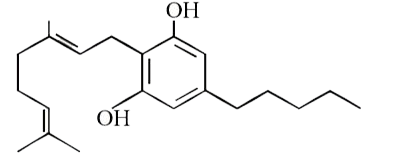Draw an electron dot diagram to show the structure of hydronium ion. State the type of bonding present in it.
To draw the electron dot diagram for the hydronium ion (H₃O⁺) and state the type of bonding present, follow these steps:
Step 1: Identify the Components
The hydronium ion is formed from a water molecule (H₂O) and a proton (H⁺). The water molecule consists of two hydrogen atoms and one oxygen atom.
Step 2: Determine Valence Electrons
- Oxygen (O) has 6 valence electrons.
- Each Hydrogen (H) has 1 valence electron.
- Therefore, in H₂O:
- Oxygen contributes 6 electrons.
- Two Hydrogens contribute 2 electrons (1 each).
- Total = 6 + 2 = 8 valence electrons.
Step 3: Draw the Water Molecule
- Place the oxygen atom in the center.
- Connect the two hydrogen atoms to the oxygen atom with single bonds.
- Represent the valence electrons of oxygen as dots around the oxygen atom:
H∣OH:(the.representsthelo≠pairofe≤ctronson⊗y≥n)
Step 4: Add the Proton (H⁺)
- When a proton (H⁺) is added to the water molecule, it does not have any electrons of its own.
- The oxygen atom donates one of its lone pair electrons to form a bond with the proton, creating a coordinate bond.
Step 5: Draw the Hydronium Ion Structure
- The resulting structure will have three hydrogen atoms bonded to the oxygen atom, and the oxygen atom will have no lone pairs left. The overall charge of the ion is positive due to the presence of the extra proton.
H∣O⁺HH
Step 6: State the Type of Bonding
The bonding in the hydronium ion involves:
- Covalent Bonds: The bonds between the oxygen and the hydrogen atoms are covalent bonds formed by the sharing of electrons.
- Coordinate Bond: The bond formed between the oxygen and the added proton (H⁺) is a coordinate bond, where the oxygen atom provides both electrons for the bond.
Final Answer
The electron dot diagram for the hydronium ion (H₃O⁺) shows three hydrogen atoms bonded to an oxygen atom with a positive charge. The type of bonding present in the hydronium ion includes covalent bonds and a coordinate bond.
---
The hydronium ion is formed from a water molecule (H₂O) and a proton (H⁺). The water molecule consists of two hydrogen atoms and one oxygen atom.
- Oxygen (O) has 6 valence electrons.
- Each Hydrogen (H) has 1 valence electron.
- Therefore, in H₂O:
- Oxygen contributes 6 electrons.
- Two Hydrogens contribute 2 electrons (1 each).
- Total = 6 + 2 = 8 valence electrons.
- Place the oxygen atom in the center.
- Connect the two hydrogen atoms to the oxygen atom with single bonds.
- Represent the valence electrons of oxygen as dots around the oxygen atom:
H∣OH:(the.representsthelo≠pairofe≤ctronson⊗y≥n)
- When a proton (H⁺) is added to the water molecule, it does not have any electrons of its own.
- The oxygen atom donates one of its lone pair electrons to form a bond with the proton, creating a coordinate bond.
- The resulting structure will have three hydrogen atoms bonded to the oxygen atom, and the oxygen atom will have no lone pairs left. The overall charge of the ion is positive due to the presence of the extra proton.
H∣O⁺HH
The bonding in the hydronium ion involves:
- Covalent Bonds: The bonds between the oxygen and the hydrogen atoms are covalent bonds formed by the sharing of electrons.
- Coordinate Bond: The bond formed between the oxygen and the added proton (H⁺) is a coordinate bond, where the oxygen atom provides both electrons for the bond.
The electron dot diagram for the hydronium ion (H₃O⁺) shows three hydrogen atoms bonded to an oxygen atom with a positive charge. The type of bonding present in the hydronium ion includes covalent bonds and a coordinate bond.
Topper's Solved these Questions
- CHEMICAL BONDING BOOK - ICSECHAPTER - CHEMICAL BONDING EXERCISE - Questions from Previous ICSE Board Papers (2013)
4 Videos
- CHEMICAL BONDING BOOK - ICSECHAPTER - CHEMICAL BONDING EXERCISE - Questions from Previous ICSE Board Papers (2014)
12 Videos
- CHEMICAL BONDING BOOK - ICSECHAPTER - CHEMICAL BONDING EXERCISE - Questions from Previous ICSE Board Papers (2011)
4 Videos
- ANALYTICAL CHEMISTRY-USE OF AMMONIUM & SODIUM HYDROXIDEBOOK - ICSECHAPTER - ANALYTICAL CHEMISTRY-USE OF AMMONIUM & SODIUM HYDROXIDEEXERCISE - Additional Questions
6 Videos
- CHEMISTRY 2011BOOK - ICSECHAPTER - CHEMISTRY 2011EXERCISE - SECTION-II
48 Videos
Similar Questions
Draw an electron dot diagram to show the formation of ammonium ion [N = 7, H = 1]
View SolutionDraw a labelled diagram of the structure of the eye.
View SolutionDraw the structural formula of carbon tetrachloride & state the type of bond present in it.
View SolutionBy drawing an electron dot notation show the formation of ammonium ion .
View SolutionDraw a labelled diagram of the internal structure of human ovary.
View SolutionWhich type of bond is not present in DNA :-
View SolutionAn element has a face-centred cubic (fcc) structure with a cell edge of a. The distance between the centres of two nearest tetrahedral voids in the lattice is:
View SolutionDraw labelled diagram of the structure of a single granum thylakoid.
View SolutionDraw an electron dot diagram of a hydronium ion and label the lone pair of electron.
View Solution
Diagram is showing skeletal structure of :-
View Solution
